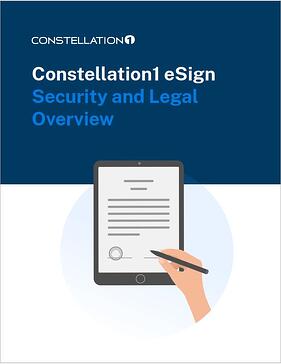You are viewing our site as an Agent, Switch Your View:
Agent | Broker Reset Filters to Default Back to ListDoes a Typed Name Count as a Legally Binding Signature?
October 11 2022
 A lot of people wonder whether typing their name on a screen counts as a legally binding signature. So, is it? We have the answer you're looking for.
A lot of people wonder whether typing their name on a screen counts as a legally binding signature. So, is it? We have the answer you're looking for.
In the past, the only way to sign a document was to whip out a pen and trace a line of ink across a sheet of paper. Today, things are a lot different, and knowing when a document is properly (and legally) signed can be confusing, despite being defined by federal law more than two decades ago. One question we see a lot is, Are typed signatures considered "legal"? The short answer is yes, but there's a little bit more to it than that. Read on to find out what.
Will a court of law recognize typed signatures?
Most e-signature solutions allow users to draw or create a stylized signature that looks like it was written by hand. Users can then add it to the documents they want to sign. Signing this way often makes all parties feel secure, combining the old (handwritten signatures) with the new (electronic documents and forms). But signatures don't necessarily have to look like handwriting to hold up in a court of law.
According to the definition provided in the Electronic Signatures in Global and National Commerce (E-Sign Act), the U.S. federal law that regulates electronic signatures in nearly all 50 states, an e-signature is an electronic sound, symbol, or process, attached to or logically associated with a contract or other record and executed or adopted by a person with the intent to sign the record. To cut through the legalese, an e-signature can take a variety of forms (even an audio file), provided it meets certain criteria.
All of the following are considered valid types of e-signatures:
- A name typed at the end of an email
- A name or initials typed into a field on a webpage or electronic form
- A checkbox or radio button corresponding to a phrase such as "I Agree" or "I Accept" for terms and conditions on an e-commerce site
- A signature drawn on a screen using a finger or stylus
- A signature created using an electronic signature solution
Typed signatures are therefore legally binding, as long as the other E-Sign Act requirements, which we covered in a previous blog post, are followed. As a reminder these are:
- Authentication: Signers must be authenticated so their identities can be proven.
- Consent: Signers must consent to doing business and signing documents electronically.
- Intent: Signers must demonstrate intent to sign to prove they did not sign unknowingly and weren't tricked.
- Paper trail: There must be a detailed audit log of all signing session activity, users, clicks, actions, etc. Some solutions might also certify documents using a digital Certificate Authority on the Adobe Approved Trust List to "seal" the document, so you know if anything has been altered.
- Retention: All signed documents are sent to all parties and stored securely for reference.
Want to learn more about electronic signatures? Click here to download Constellation1's free security and legal overview for electronic signatures:

Do you have specific questions about whether eSign will stand up to the electronic signature requirements in your industry? Get in touch and our dedicated e-signature team will be happy to tell you about our industry-leading features in greater detail. You can read our previous post on the legality of eSignatures here.
To view the original article, visit the Constellation1 blog.









